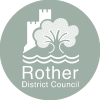Any development within 500m of a pond may affect newts
Great crested newts are dependent upon ponds to breed although they actually spend most of their life on land in places such as woodland, hedgerows, rough grassland and scrub. They are generally found within 500m of ponds, although they can travel much further than this – up to 1.6km.
Great crested newts and their habitats are legally protected in the UK so that planning authorities must consider the species as part of the planning process and developers must be careful not to break the law. Where impacts may arise, developers should obtain a licence to make the activities lawful – this is usually additional to the planning process but where the planning authority hold a District Licence the two can be brought together in a quicker and simpler process.
Natural England have produced a guidance document for all planning authorities using the NatureSpace District Licensing Scheme – the most recent version of this guidance document can be found in the resources section of the NatureSpace website. This guidance document explains that local planning authorities can rely on the ‘Impact Risk Zone’ maps to identify where great crested newts are likely to be. In the higher risk areas (red and amber zones), planning applicants must now set out how risks to great crested newts will be dealt with. This may be through the Council’s District Licensing Scheme, or by following Natural England’s Standing Advice and where necessary, applying separately to Natural England for a standard mitigation licence.
In summary, unless it can be demonstrated that there is no risk to great crested newts or their habitats, there are now three licensing options in Rother District Council area. These are:
- Joining the District Licence Scheme and being authorised by Rother District Council as part of the planning process; or
- Applying directly to Natural England for a licence post-planning; or
- By working with a registered ecologist under the low impact class licence.
Using the Council’s District Licence – delivered by NatureSpace
- Rother District Council holds a great crested newt District Licence, granted by Natural England, under which developments can now be authorised.
- If you wish to use the District Licence, you must apply before or during (not after) the planning process, otherwise variations to any planning consent will be necessary.
- You can opt into the scheme by contacting NatureSpace to request a free upfront assessment which will determine eligibility and all associated costs, timing and mitigation requirements.
- Under the District Licensing Scheme habitat compensation is delivered by the Newt Conservation Partnership, who take on responsibility for the habitat creation as well as long-term monitoring and management, so that developers don’t have to. Compensation through the scheme delivers landscape-scale conservation for great crested newts.
- District Licence and Biodiversity Net Gain (BNG) – Users of the District Licence scheme can also benefit from the integrated Biodiversity Net Gain package managed by NatureSpace and the Newt Conservation Partnership. More information on this can be found on the NatureSpace website.
District Licence Scheme contact:
www.naturespaceuk.com
email: info@naturespaceuk.com
Tel: 01865 688307
Natural England standard mitigation licence
- Planning permission needs to be in place before a licence application can be made to Natural England.
- Newt surveys of ponds within 500m of the development site will need to be carried out during the survey season (mid-March to mid-June) to establish presence/likely absence of great crested newts. A population size class assessment (involving 6 survey visits throughout the survey season) may also be needed.
- Where great crested newts are present, details of surveys, impact assessment, mitigation and compensation will need to be submitted and agreed with the local planning authority as part of a planning application in order to comply with legislation as well as national and local planning policy.
- Once planning permission has been granted, a licence application will need to be prepared and submitted to Natural England, including details of impacts, mitigation, compensation, management and monitoring. This would need to demonstrate that compensation will maintain or enhance the great crested newt population.
Contact Natural England Licencing
Non-licensed route
- In some cases, risks of impacts may be considered to be so low that a licence is not necessary. This may involve an ecologist preparing a precautionary method of working and reasonable avoidance measures (RAMs) to avoid offences and avoid the need for a licence.
- If great crested newts are subsequently discovered, all works must cease, and Natural England must be contacted for advice. A licence is likely to be required before works can recommence. At this stage it may not be possible to access the District Licensing Scheme and a standard mitigation licence may be the only option, depending on what works have been undertaken.

